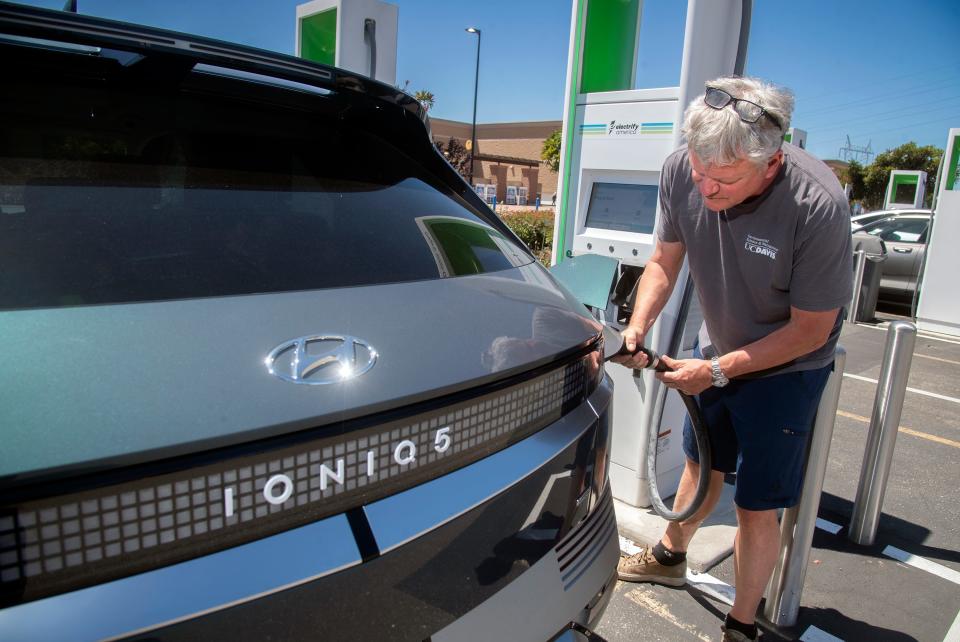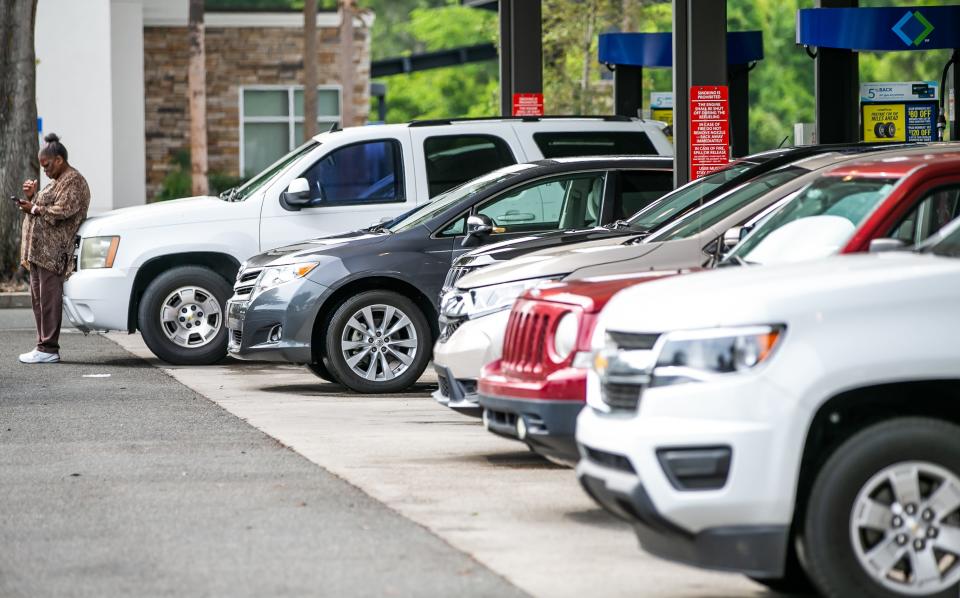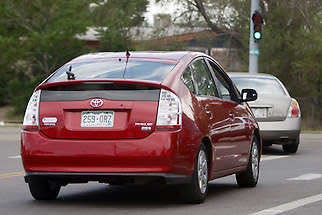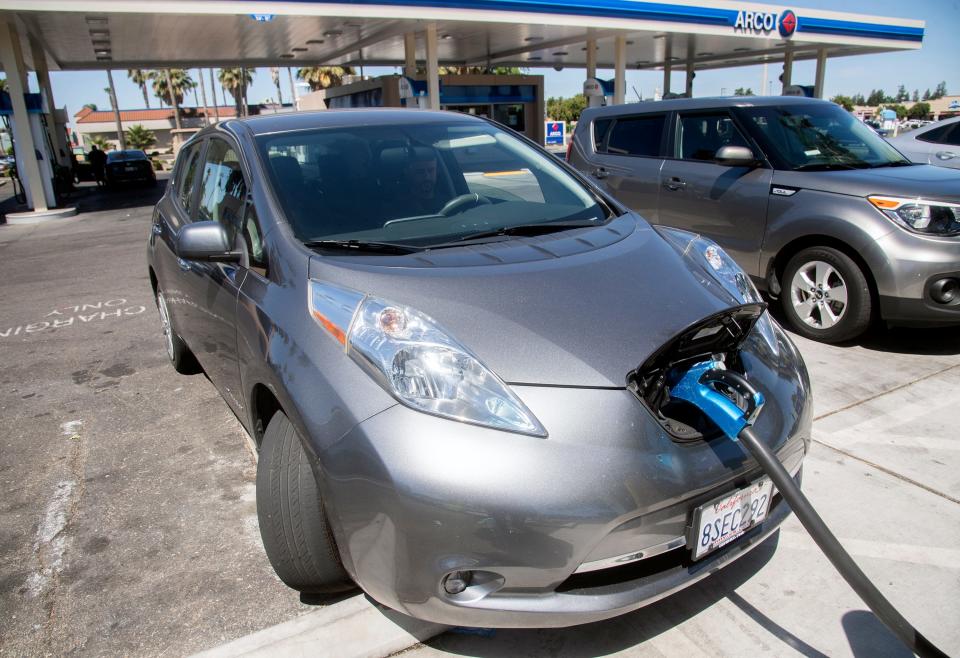EV vs. hybrid vs. gas-powered cars: What's the difference?
Editor's note: This story has been updated to correct the number of gas stations in the United States.
The wheels on the bus — and cars, and trucks, and vans — go round and round, but what powers them to do so?
The answer depends on the vehicle.
For much of the first century of mass-produced automobiles, the answer was gasoline. But then came hybrid cars in the late-1990s (think Toyota Prius), plug-in hybrids in the decade that followed (Chevy Volt) and all-electric vehicles, or EVs, in the 2010s (Nissan LEAF, Tesla). Now, several automakers are exploring hydrogen-fueled cars.
The dawn of the EV age: Why drivers are embracing electric cars, soon to be made in Savannah
EVs and the environment: How electric cars are impacting emissions and climate change
Interest sparked?: How Georgians are gearing up to adopt EVs ahead of Hyundai plant opening

Savannah will soon become an EV epicenter, with Hyundai planning to open a massive assembly plant in Bryan County in January 2025. Hyundai will be the first automaker to open a large-scale production facility in the Savannah area, and the project has many locals seeking to learn more about EVs and the differences between the battery-powered cars and their alternatively fueled cousins.
Here’s what you need to know.
Gas cars: How does an internal combustion engine work?
Gas cars are easily identified by the sound — a growl in many instances — of an internal combustion engine. Put simply, the engine produces power by mixing gasoline with air, compressing it and lighting it with a spark. The resulting explosion, or combustion, drives pistons that supply energy to turn the wheels.

Gasoline is refined petroleum, which is a fossil fuel mined from underground deposits found around the world. The United States is the world’s largest oil producer but demand is so high that any significant disruption worldwide can cause drastic price swings, such as those seen since Russia invaded Ukraine and many nations, including the U.S., banned the import of Russian oil. Russia is responsible for approximately 11% of the world’s oil supply.
Gas cars make up 90% of passenger car and truck sales in the United States and they remain the easiest to refuel, with an estimated 145,000 gas stations littering the landscape.

Hybrid cars: What happens when you marry a battery to an engine?
Hybrids are battery-powered vehicles that run on gasoline. The battery supplies energy to the car’s wheels but is charged by a combination of an internal combustion engine and power captured when the car brakes, known as regenerative braking.
Because the engine only runs when the battery charge is low, hybrids produce significantly better gas mileage. For example, a Toyota Prius hybrid boasts 58 mpg compared to 31 mpg for Toyota’s compact sedan, the Corolla.
Approximately 5.5 million hybrids are on America’s roads, making up around 1.6% of the U.S. light passenger automobile fleet.
Plug-in hybrid: When you want an engine, just in case
Cars spend most of each day not in use, sitting motionless in parking lots, driveways and garages. The plug-in hybrid gives owners the opportunity to leverage all this downtime by plugging the car into the electrical grid and using that electricity to charge the battery.
Like its hybrid cousins, plug-in hybrids are equipped with gas-powered engines, which kick on to charge the battery when necessary. This ensures that the cars will have power on long trips or commutes. On average, plug-ins are twice as fuel efficient as other hybrids.

EV: What happens with nothing under the hood?
All-electric vehicles, also known as zero emissions vehicles, are powered solely by lithium ion batteries — there’s no internal combustion engine, no tailpipe or exhaust system, no gas tank. The battery is charged via the electrical grid and also reclaims energy via generative braking, like a plug-in hybrid.
Without an engine to serve as a backup, EVs offer limited driving range before needing to be recharged. Most EVs today get more than 200 miles on a charge, a significant improvement from just five years ago, when the most popular EV, the Nissan LEAF, claimed just an 80-mile range.
Most EV owners charge their cars at their homes, although EV charging stations are becoming more prevalent. Charging times vary widely: Tesla “superchangers” can refuel that automaker’s car batteries in less than 30 minutes. A normal charging time is measured in hours.
EVs are still in their infancy and comprise less than 1% of the U.S. light automobile fleet.
This article originally appeared on Savannah Morning News: EVs are the future. Here's how they differ from gas and hybrid cars

